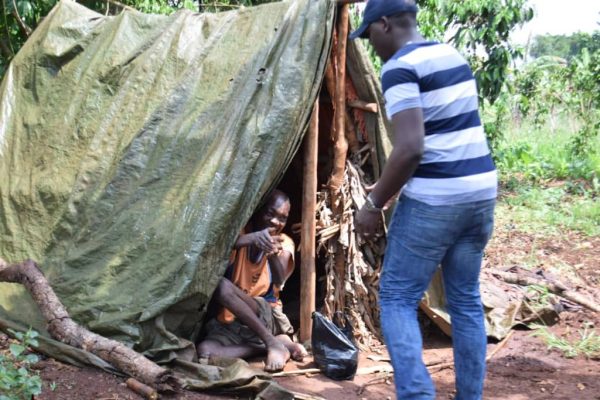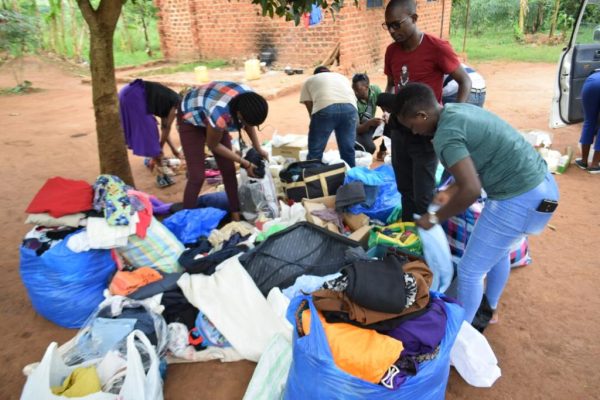
-
Project Name
Hope Link Outreach Program
-
Location
Uganda
-
Year Of Establishment
2012
-
Project Type
Charity
-
Associated Events
Community Outreach Programs
Restoring Hope, Rebuilding Lives
The Hope Link Project is a humanitarian initiative dedicated to alleviating the suffering caused by poverty, natural disasters, and conflict across African communities. The project focuses on providing essential resources such as food, clean water, hygiene products, and temporary housing. By addressing immediate needs, the Hope Link Project aims to stabilize vulnerable populations and create a foundation for sustainable development and empowerment.
Objectives
Provide essential resources to communities in need to meet their basic needs.
Offer short-term relief to improve the well-being of vulnerable populations.
Ensure access to clean water and sanitation to reduce disease and health risks.
Help communities build their capacity to recover from crises and adapt to future challenges.
Transition from immediate aid to sustainable development initiatives.
Collaborate with local and international organizations for efficient resource mobilization.


Key Project Components
- Food Distribution:
- Water Access and Sanitation:
- Hygiene Kits:
- Purpose: Combat hunger and malnutrition in vulnerable communities by providing access to essential food items.
- Approach: Distribute non-perishable foods, ready-to-eat meals, and nutritional supplements in areas affected by poverty, disaster, or conflict.
- Implementation: Partner with local food banks, suppliers, and NGOs to source food, focusing on culturally appropriate and nutritious options. Ensure equitable distribution through community leaders and volunteers.
- Impact: Immediate hunger relief, prevention of malnutrition, and improvement in overall community health, especially among children, pregnant women, and the elderly.
- Purpose: Ensure that affected communities have access to clean, safe drinking water and proper sanitation facilities to prevent waterborne diseases.
- Approach: Install water purification systems, dig wells, provide water filtration kits, and distribute bottled water where needed. Promote hygiene education campaigns on safe water usage.
- Implementation: Collaborate with water engineering specialists, local governments, and global agencies like UNICEF to build and maintain sustainable water systems. Establish mobile sanitation facilities where permanent structures are not feasible.
- Impact: Reduced risk of diseases such as cholera, diarrhea, and typhoid, and improved community health, especially in disaster zones and refugee camps.
- Purpose: Promote health and hygiene in underserved communities by providing essential products to reduce disease transmission and improve sanitation.
- Approach: Distribute hygiene kits containing items like soap, toothbrushes, toothpaste, menstrual hygiene products, hand sanitizers, disinfectants, and face masks.
- Implementation: Work with health organizations to ensure that hygiene kits meet the specific needs of each community. Regular distribution and education campaigns to ensure proper usage and lasting health benefits.
- Impact: Improved personal hygiene, reduced spread of infectious diseases, and better overall community health, particularly in high-density living areas such as refugee camps.
- Community Engagement:
- Sustainability Planning:
- Shelter Solutions:
- Purpose: Empower local communities to actively participate in identifying their needs and implementing solutions, ensuring long-term impact and sustainability.
- Approach: Establish community committees, composed of local leaders, women, youth, and marginalized groups, to provide input on aid distribution, resource allocation, and long-term recovery plans.
- Implementation: Conduct regular town hall meetings, focus groups, and surveys to gather feedback and adjust project activities based on community needs. Train volunteers and local leaders to oversee and implement key project components.
- Impact: Increased community ownership, better resource allocation, and strengthened social cohesion, leading to more effective and sustainable interventions.
- Purpose: Transition from immediate relief efforts to long-term, self-sustaining development initiatives that empower communities to build resilience against future crises.
- Approach: Introduce skills training, micro-enterprises, agricultural programs, and vocational education to promote economic independence. Establish programs in clean energy, local food production, and water management for lasting impact.
- Implementation: Partner with local governments, NGOs, and international development agencies to offer capacity-building programs. Gradually reduce external aid as communities gain self-sufficiency through local economic growth and infrastructure improvements.
- Impact: Long-term community resilience, reduced dependency on external aid, and a strengthened local economy capable of withstanding future challenges such as natural disasters or economic shocks.
- Purpose: Provide safe, temporary or transitional housing to displaced individuals and families affected by disasters or conflict.
- Approach: Offer temporary shelter solutions such as tents, prefabricated housing units, or transitional shelters made from locally sourced materials. Focus on safe, dignified housing environments with privacy and security.
- Implementation: Collaborate with architectural and construction NGOs, and local governments to provide rapid shelter solutions. Engage community members in constructing shelters to foster local ownership and responsibility.
- Impact: Reduced exposure to the elements, protection from environmental hazards, and the restoration of safety and dignity for families who have lost their homes.
Feed A Child Today
Focusing on providing essential resources such as food, clean water, hygiene products, and temporary housing
